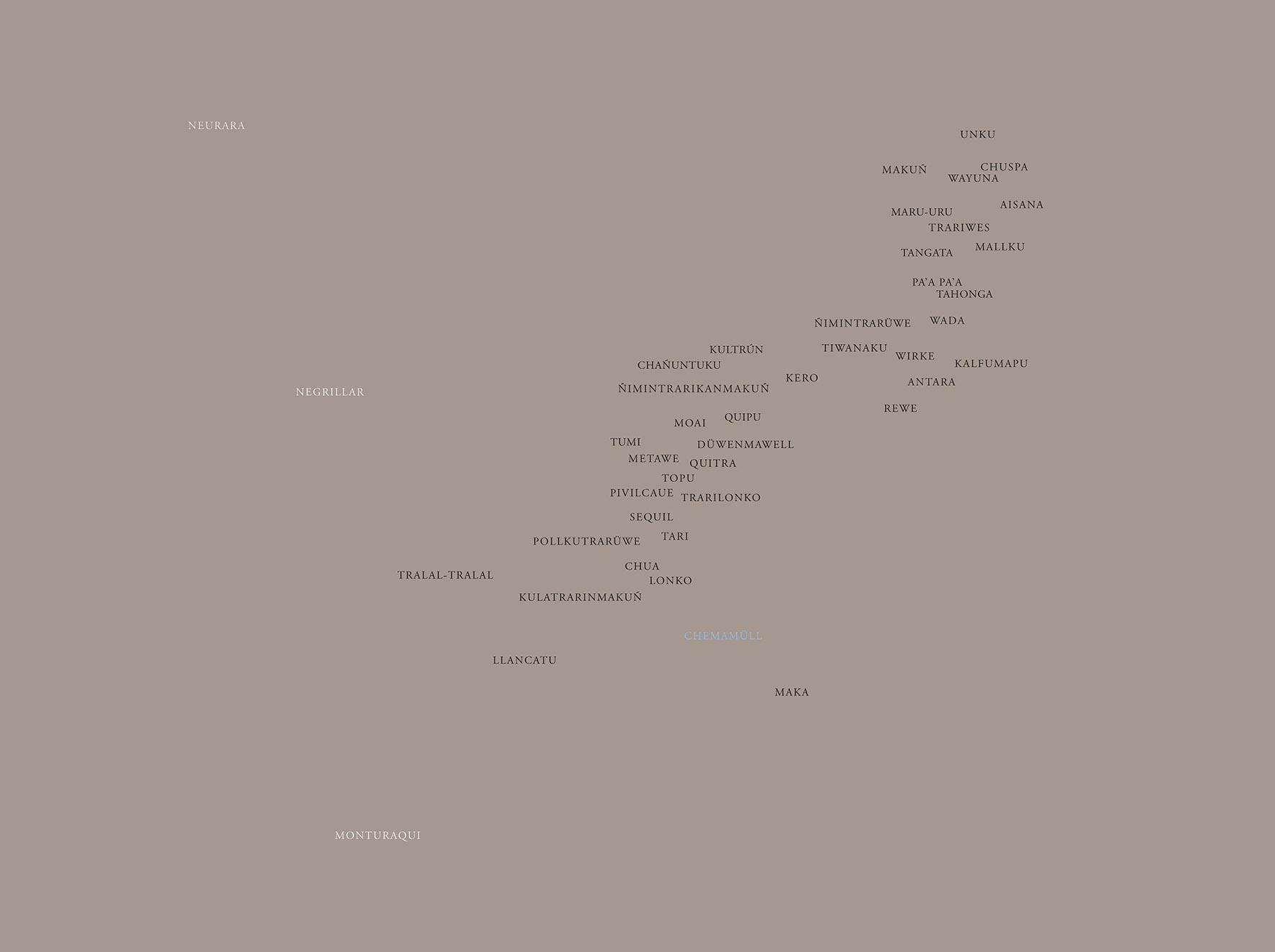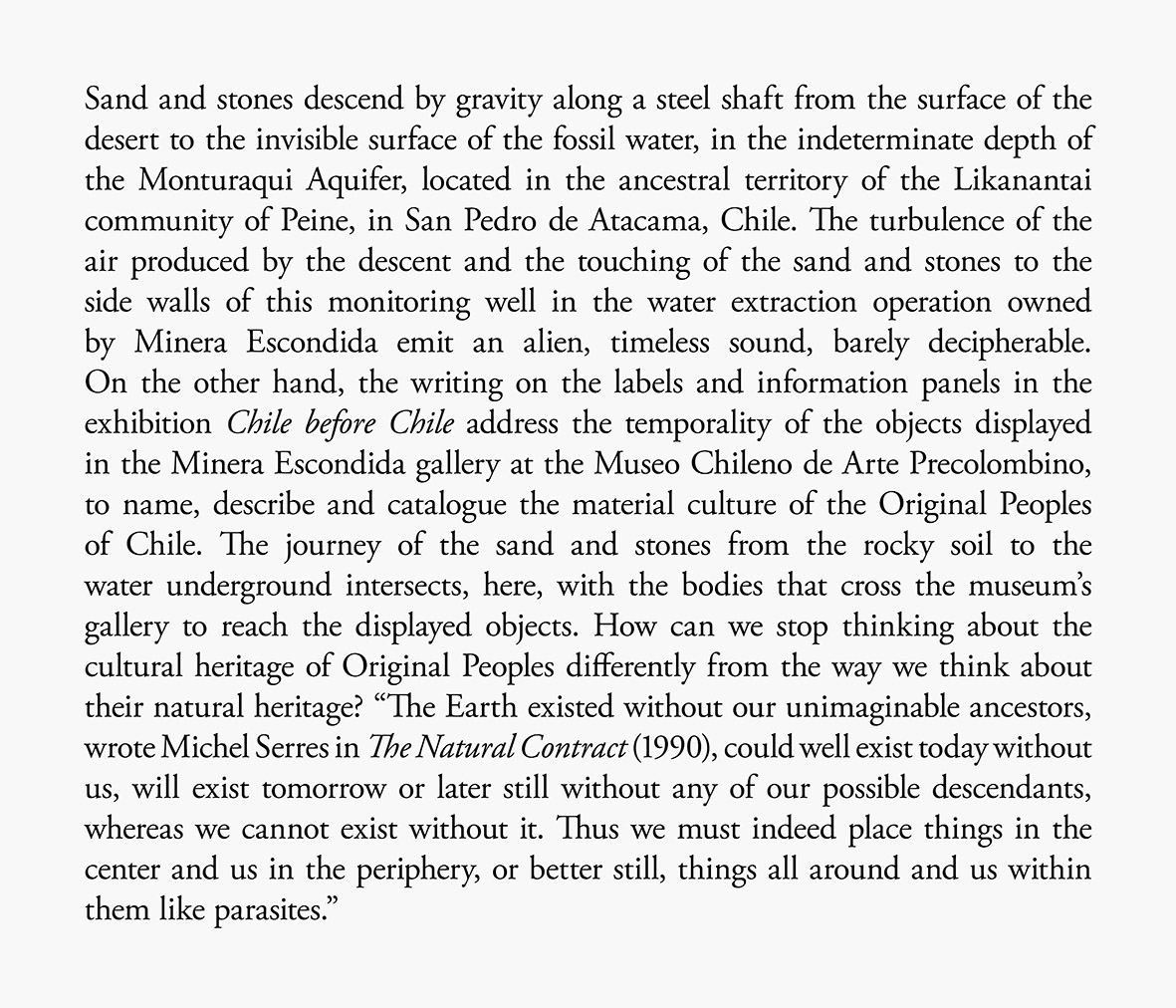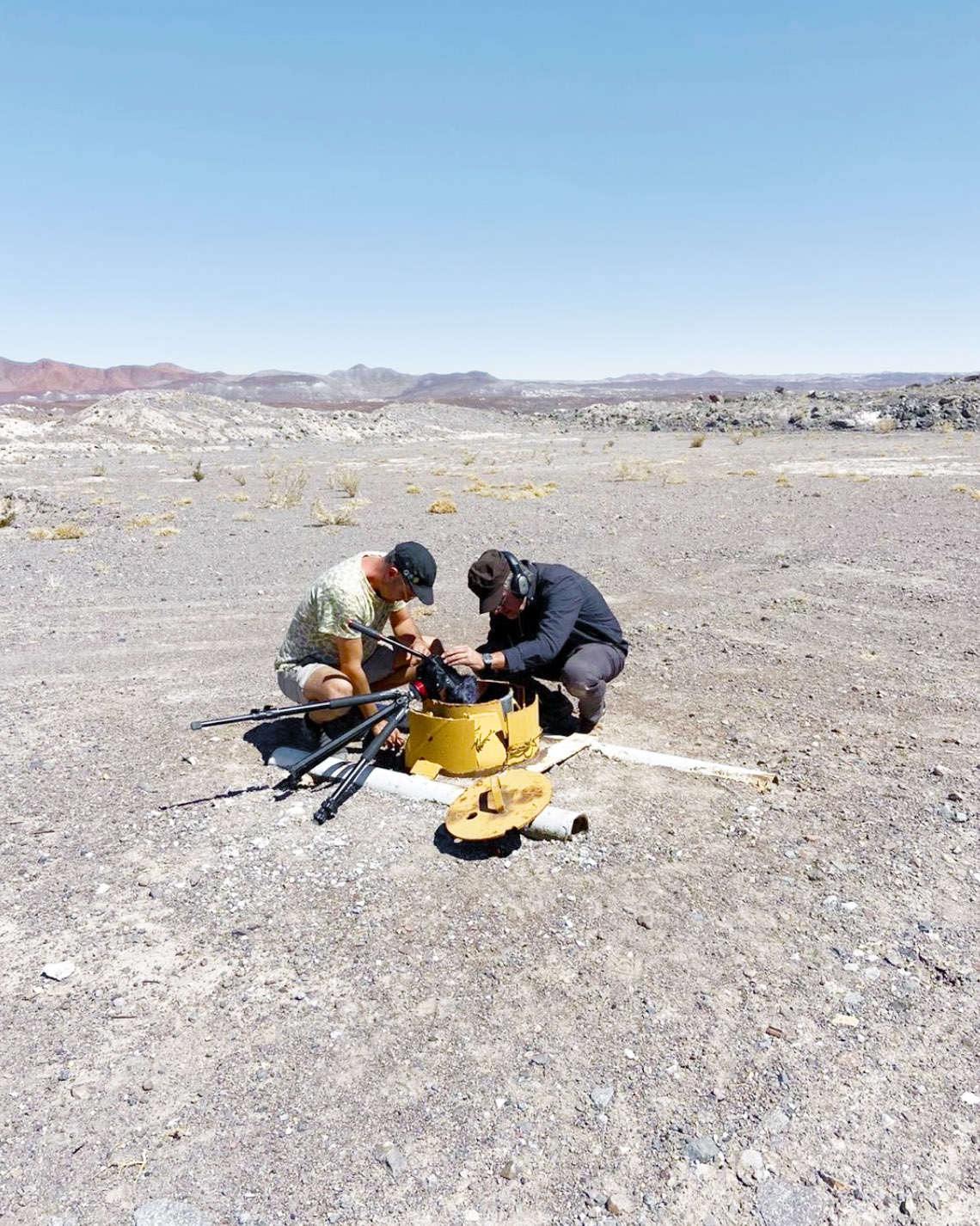© XAVIER RIBAS - Monturaqui (2024) 92 Pigment prints on Hahnemühle Photo Rag Baryta, 36.5 x 46 cm each, sound 10'41" looped, vinyl text 36.5 x 46 cm, words map 90 x 120 cm. Ed 3+1ap

Monturaqui (2024), 92 Pigment prints 36.5 x 46 cm each.
Monturaqui documents the abandoned industrial structures of water extraction on the Monturaqui aquifer, located in the ancestral territory of the Lickanantay community of Peine, in San Pedro Atacama, Chile. In 1999, BHP Group Ltd signed an agreement with the Chilean government to extract 1,400 litres of water per second from Monturaqui for a period of twenty years to supply water to Escondida, a copper mine situated some fifty miles away. After years of complaints by the local community, on the 31 of December 2019 Escondida's operation in Monturaqui was terminated when it was finally proven that the company exceeded more than three times the agreed limit of the concession. BHP Group Ltd was then fined a derisory sum of $8.2 million, for having caused irreparable damage to the phreatic zone. The photographs, taken in February and November 2022, show different stages of decommissioning of the abandoned infrastructure, either due to vandalism or looting, or by Minera Escondida as part of their closure plan, the return of the post-extractive landscape to the Lickanantay community and the beginning of the reclamation of their ancestral territory.
Within the ninety black and white photographs of Monturaqui, there are two colour photographs. One shows the Minera Escondida gallery in the Museo Chileno de Arte Precolombino, in Santiago. The construction of this new underground gallery, as its name indicates, was financed by Minera Escondida/BHP Group Ltd. The gallery displays a permanent exhibition, titled 'Chile before Chile', of a selection of artifacts related to the material culture of the Original Peoples on the Chilean territory. The second colour photograph shows the large canvas 'La fundación de Santiago', painted by Pedro Lira in 1888, hanging in the main staircase of the Museo Nacional de Bellas Artes, in Santiago. The historical painting commemorates the moment of encounter between two peoples in 1541 and the beginning of the Spanish influence in this land which will later become Chile. These two color photographs call into question the generalised – Western, colonial, white – differential perception of the cultural heritage of the ancestral peoples of Chile, preserved in national and private museums, and of their natural heritage which, since the arrival of the Spanish to the American continent in 1492 has been subjected to resource extraction. The work also includes a sound recording of the aquifer's deep water, and a 'words map' of the Monturaqui water wells and other industrial infrastructure, overlayed with the vernacular names of objects displayed in the Minera Escondida gallery at the Museo Chileno de Arte Precolombino.
---
Sand and stones descend by gravity along a steel shaft from the surface of the desert to the invisible surface of the water, in the indeterminate depth of the Monturaqui Aquifer, located in the ancestral territory of the Lickanantay community of Peine, in San Pedro de Atacama, Chile. The turbulence of the air produced by the descent and the touching of the sand and stones to the side walls of this monitoring well in the water extraction operation owned by Minera Escondida emit an alien, timeless sound, barely decipherable. On the other hand, the writing on the labels and information panels in the exhibition 'Chile before Chile' address the temporality of the objects displayed in the Minera Escondida gallery at the Museo Chileno de Arte Precolombino, to name, describe, and catalogue the material culture of the Original Peoples of Chile. The journey of the sand and stones from the rocky soil to the water underground intersects, here, with the bodies that cross the museum's gallery to reach the displayed objects. How can we stop thinking about the cultural heritage of Original Peoples differently from the way we think about their natural heritage? "The Earth existed without our unimaginable ancestors, wrote Michel Serres in The Natural Contract (1990), could well exist today without us, will exist tomorrow or later still without any of our possible descendants, whereas we cannot exist without it. Thus we must indeed place things in the center and us in the periphery, or better still, things all around and us within them like parasites."
© Xavier Ribas
This work is part of the Traces of Nitrate project developed in collaboration with Chilean visual artist Ignacio Acosta and British historian Louise Purbrick. Traces of Nitrate is based at the University of Brighton and the Royal College of Art in London, and is financed by the UK Arts and Humanities Research Council [AHRC].
---
Selection of 40 images | prev | next

Monturaqui, a selection of forty of the ninety-two images.

Monturaqui, Words map, 90 x 120 cm.

Monturaqui, Text element, 36.5 x 46 cm.

Recording the sound of the underground water of the Monturaqui aquifer with Ignacio Acosta, October 2022.
Teaser of the Monturaqui Aquifer audio [51"]